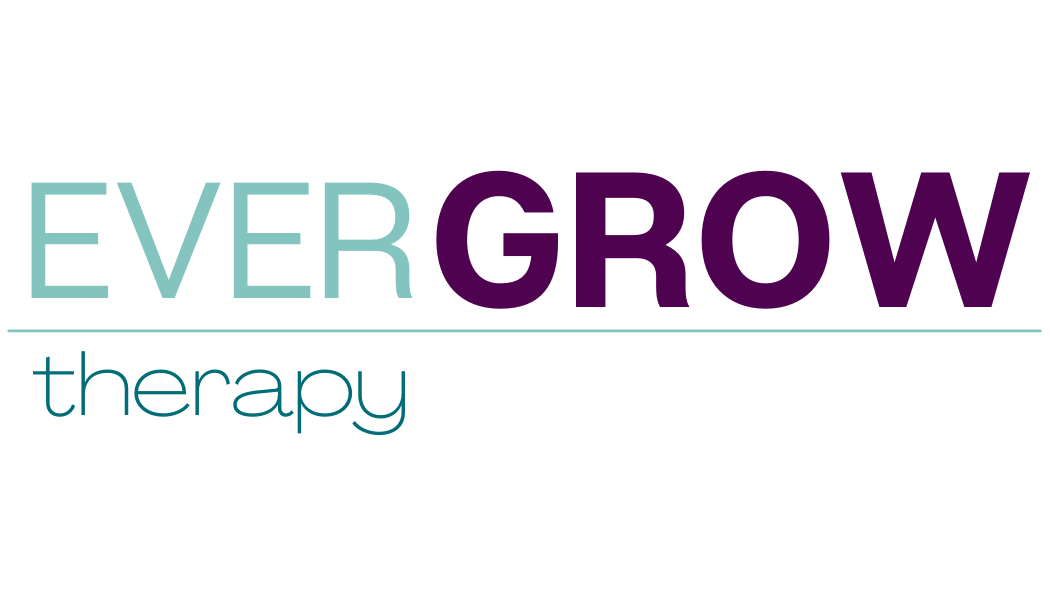Create Better Boundaries in 5 Steps
We all need some form of protection as we navigate this world, and building and maintaining healthy boundaries is one important way of protecting and caring for ourselves. Find out more about boundaries, where they might be helpful, and how to go about implementing them.
What are boundaries?
Boundaries are the lines, whether visible or not, that separate one entity from another. They can refer to the state lines that separate one state from another, the fence lines that separate one yard from another, or the personal boundaries that separate you from me.
Healthy boundaries are not black and white, but instead are fluid and responsive to the situation. For example, if you own a home with a fenced yard, you would not assume that your fence prohibited you from inviting friends over. And you also wouldn’t assume that if you did invite friends over, that they could never leave (please don’t assume that!) Instead, what the fence does is allow you to make choices about who to invite in, and for how long, and when to keep the space for yourself.
Personal boundaries work in the same way. There is no forced choice between rigid, impenetrable boundaries and absent ones. Instead, you are empowered to make choices on when to strengthen your boundaries, when to lighten up, and when to hold them steady.
Knowing this is possible is one thing. But figuring out how to do that well is quite another thing.
Ways boundaries are crossed
Before diving into the work of improving our boundaries, it is first important to understand how they show up in our lives. After all, when it comes to boundaries in relationships, they are not visible, so we may not even recognize when they are being crossed or where there are opportunities to strengthen them.
The following is a list of areas where boundaries can come up (but keep in mind, this list is not exhaustive):
ACCESSIBILITY: How available are you to others when they want your time? Do they have access to you whenever they want? Do you feel compelled to answer phone calls, no matter what you’re in the middle of doing, or meet up despite having a desire to do otherwise? Basically, are you at someone else’s beck and call?
PEOPLE: Do you feel compelled to spend time with people that you don’t want to? Do you allow people to stay in your life despite continuing to hurt you?
EMOTIONAL SUPPORT: Do others hijack the conversation whenever you’re together? Do you feel like you’re the one always offering support or trying to “fix it?” Are you the go-to person for helping others, but have no one to turn to when you’re struggling?
RESPONSIBILITY: Do you accept blame that isn’t yours to take? Do you apologize when you haven’t done anything wrong? Do you feel guilty for minor things that aren’t a big deal? Do you allow others to guilt you into doing what they want?
WORK: Does work overpower your life? Do you feel guilty when you’re not productive or achieving? Are you able to do things to take care of yourself during your work day? Do you have protected non-work hours in your week?
SEXUALITY: Do you engage in any sexual activities that make you uncomfortable? Are your sexual encounters consistent with your personal desires? Do you ever find yourself hoping a potential partner doesn’t ask for or want specific sexual interactions because then you feel compelled to engage?
TECHNOLOGY: Do you scroll mindlessly? Do you remain engaged in technology when it contradicts what you actually want to be doing? Do you participate in social media that causes more harm to your self-esteem than good?

How to set healthy boundaries
Now that we understand the many areas of our lives in which boundaries are important, what do we do if we’re not great at setting them? Follow these 5 steps to get you started in setting limits with other things and people and taking better care of you.
1. Identify areas of inadequate boundaries
The first step in making any change is to recognize what the problem is. When trying to assess the effectiveness of your current boundaries, the best source of information is going to be your feelings. Yup, your feelings! You know, the things that get quite the bad rap, but in reality offer us incredible amounts of information. So in trying to better understand how effective our boundaries are, you are going to want to reflect on the feelings that come up in your relationships.
Start by going back through the list of areas where boundaries can be crossed. As you read each example, are there any images that pop into your mind? Perhaps memories when something similar happened, or people’s faces that stand out?
If something pops up for you, it’s a sign that your brain has made a connection between this image and this potential boundary crossing. Our brains do not lie to us, so if something comes up, it’s ok to trust it.
Each time an image or memory comes up as you review that list, send your attention to your feelings. If you’re adept at understanding your feelings, you may be able to label the emotion right away. If you’re new to the world of feelings, you may only be able to notice the physiological sensations that arise in your body. Either way, these signals are worth paying attention to.
Anxiety, anger, resentment, frustration, fear, betrayal, panic, guilt, overwhelm, burden, helplessness, hopelessness, and insecurity are just some of the feelings that you might find when boundaries are not working for you.
2. Consider different ways to set a boundary
Healthy and effective boundaries are going to look different depending on the area where it’s a concern. And of course, there are a number of ways to respond within each category, but to give you some ideas, I’ve listed out a few ways to set boundaries in each area:
ACCESSIBILITY: Turn your phone ringer off during times when you don’t want to answer it. Set a schedule of “available time” for others and only offer it to people during those times. Practice saying “no” without feeling compelled to give an explanation. Physically schedule in “me time” into your calendar so you protect that time.
PEOPLE: Reflect on the relationships in your life and categorize each relationship into how much contact you want to have with them (ex: a lot of contact, some contact, no contact) in order to guide future decisions of who you spend your time with. Practice saying “no” when you don’t want to spend time with someone. Give yourself permission to say no to group gatherings that include some individuals in your no contact category. Allow yourself to move a person into a different category if their behavior warrants it (i.e. it’s ok to move someone from the some contact category to the no contact category if they have a history of burning you).
EMOTIONAL SUPPORT: Speak up and ask for support if you’re not getting it. Challenge yourself not to jump to “fix it” whenever someone has a problem and instead ask that person how they want to respond to the problem. Cut conversations short if they are not mutually enjoyable or beneficial.
RESPONSIBILITY: Challenge your self-critical thoughts that contribute to guilt. Remind yourself that feeling guilty is not the same as actually doing something wrong. Stop mindlessly apologizing and only apologize when you’ve allowed yourself to reflect and wholeheartedly believe you’ve done something wrong. Don’t allow guilt to be a reason you do something.
WORK: Set designated non-work hours in order to help create a better work/life balance. Separate what you have to do to complete your job from what you feel like you should do. Get comfortable with not always being productive. Stop justifying self-care and just do it.
SEXUALITY: Get clear with yourself what you are and are not comfortable with. Give yourself permission to say no. Choose partners that respect your sexual boundaries and set limits with people who don’t.
TECHNOLOGY: Set designated technology hours. Use alarms to remind you when it’s time to stop screen time. Block people and accounts that bring you down. Keep your technology time separate from your time with people.
3. Pick one strategy and follow through
Boundaries are only effective when they’re followed, so after reviewing the list above, or your own alternative ideas, choose one area to start. Then just put it into practice. Consistently. Over and over again.
4. Tolerate the distress
For many people, the idea of setting boundaries coincides with a significant amount of distress. This might be guilt, anxiety, fear, panic, etc. These feelings are likely the very thing that has led to the presence of inadequate boundaries in the first place… because they can be incredibly overwhelming.
These feelings might lead you to want to run away or avoid anything and everything connected to boundaries forever. But remember, not addressing it does not make the problem go away. Because there are still all those difficult feelings we talked about earlier that come up when boundaries are crossed.
The reality is that difficult feelings arise whether we set boundaries or we don’t. But the difference is that when we choose to follow through on the boundaries we designate, we take control over our lives instead of allowing our feelings to control us.
If you choose to start setting limits with things and people, what you can expect is that initially your distress will increase. It’s just like climbing a mountain. Initially, all you can see is it getting harder and harder. It might even seem like it will never end. But if you persist, you will eventually reach the top of that mountain, at which point you can see clearly, and everything that follows is downhill.
Boundaries are just like that. At first the difficult emotions feel intense and overwhelming. But if you stay the course, they will eventually reach their peak of intensity and then start to get easier and easier.
5. Repeat
Once you get through these first four steps, the only thing left to do is repeat! Over and over and over again. Because boundaries are something that must be maintained consistently and repeatedly over time to be effective. But when you do that, you find that you have incredible power in taking care of you. And that sounds pretty damn great.
____
Dana Basu, PsyD is a licensed clinical psychologist and founder of EverGROW therapy. She provides individual therapy, support groups, and online resources for parents in Orange County and throughout the state of California via online therapy. She specializes in working with people with difficult childhood experiences, trauma, parenting stress, and chronic guilt.


